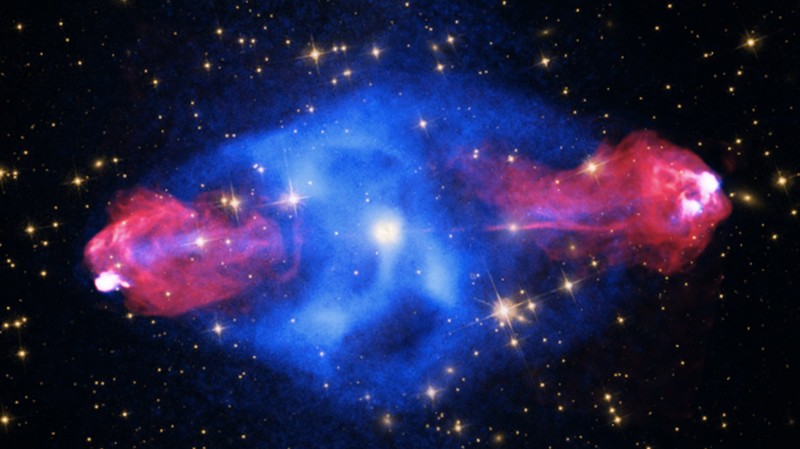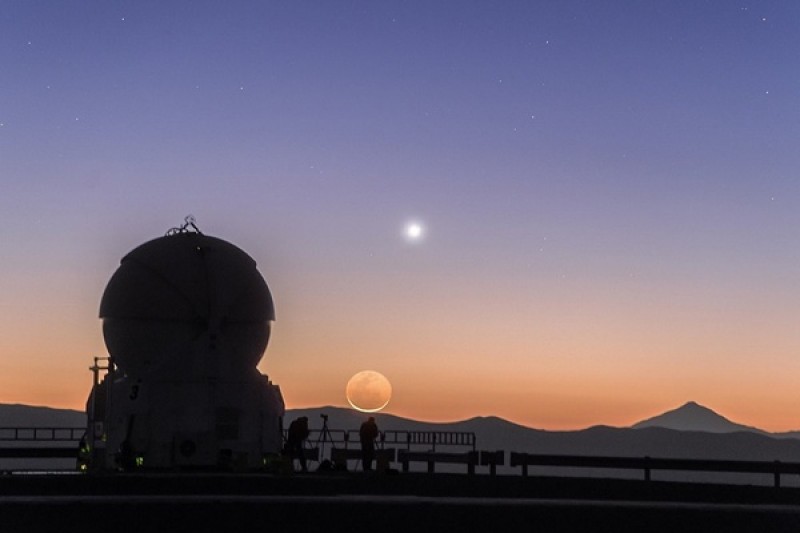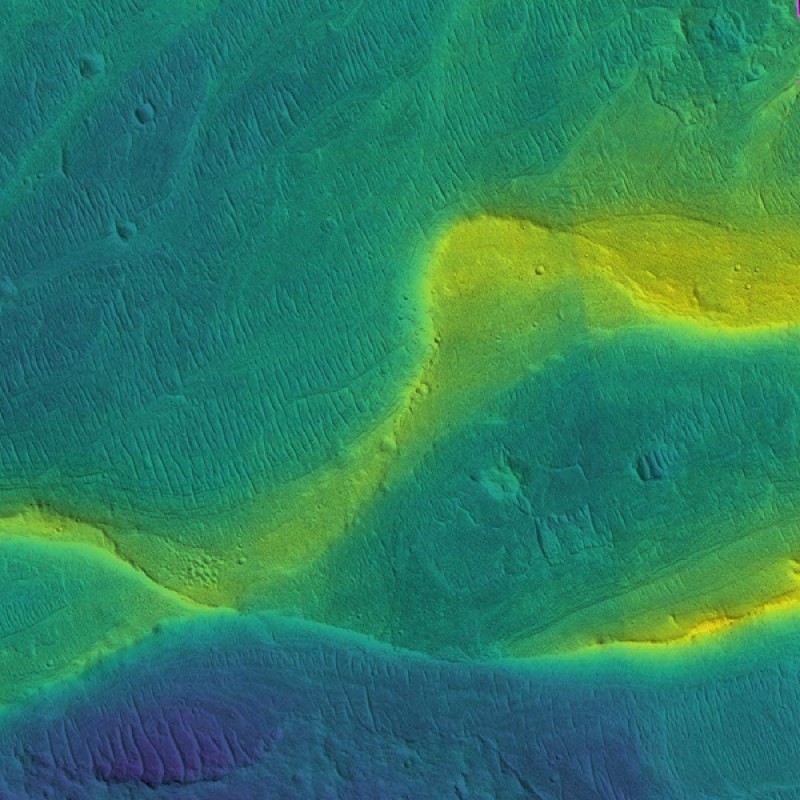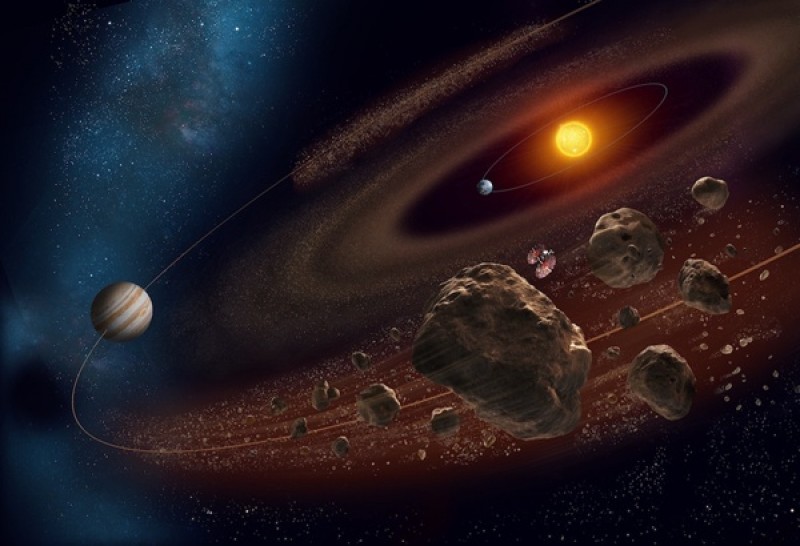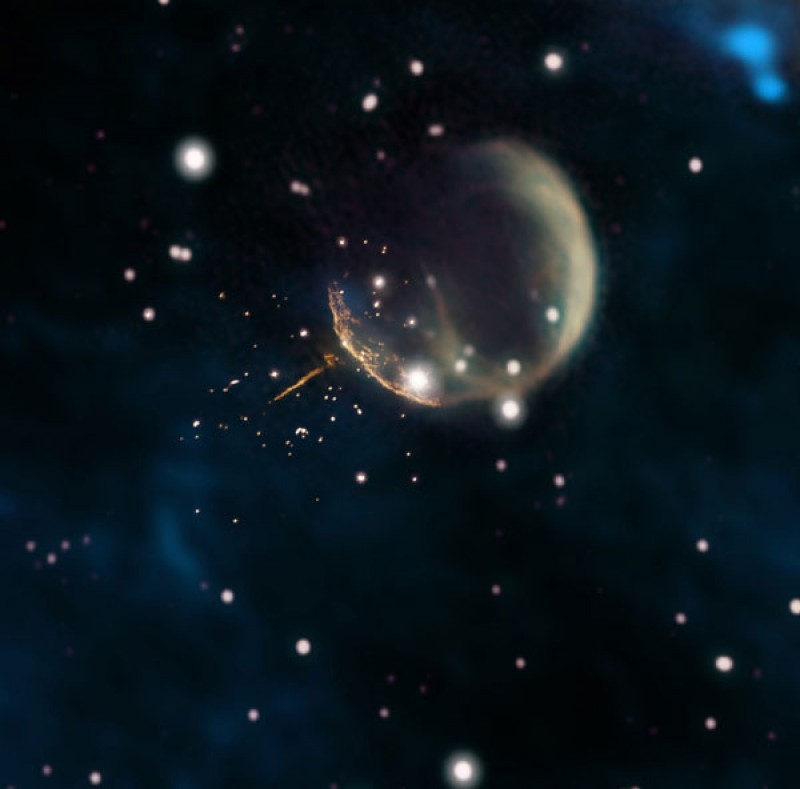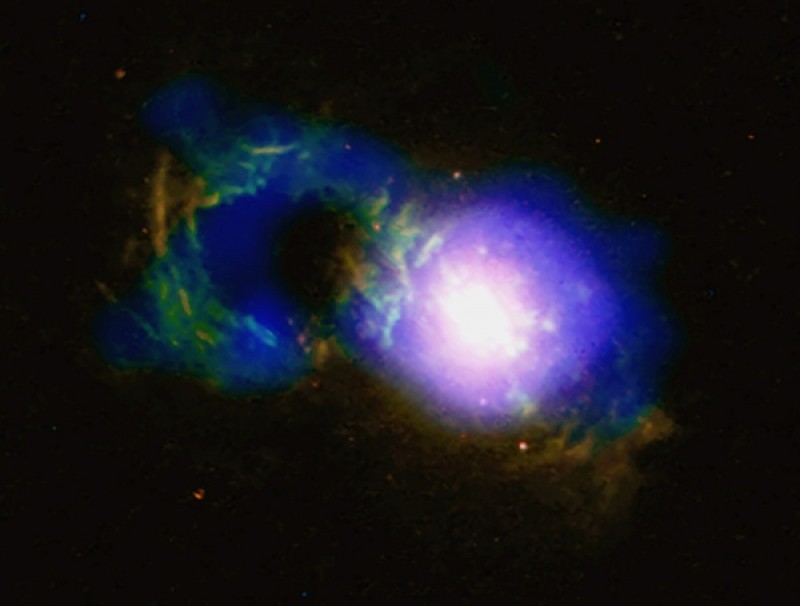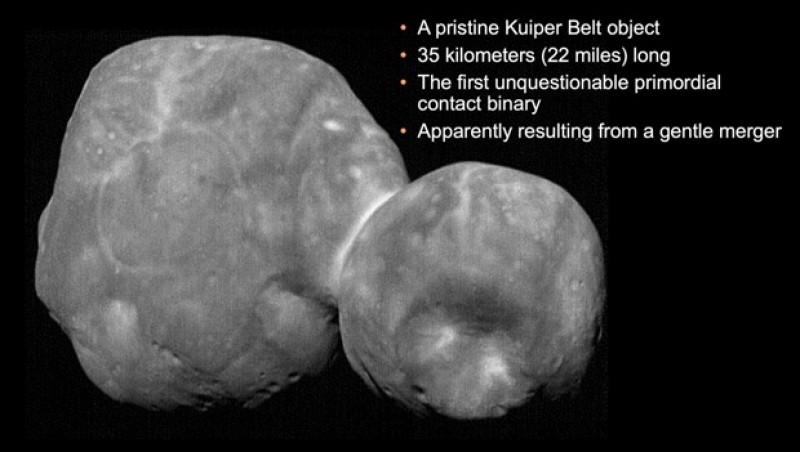Blog
ASTRONOMERS SPOT A MASSIVE DOUGHNUT OF MATERIAL AROUND QUASAR CYGNUS A’S SUPERMASSIVE BLACK HOLE
Wednesday, April 3rd 2019 07:20 PM
It’s rare that I see an astronomical image and get a chill running up my neck. But I just saw one that did just that: It shows an immense structure in the center of a galaxy that has never been seen before in this particular kind of galaxy. And it shows (once again) that a scientific model astronomers dreamed up years ago to describe hugely powerful galaxies is correct.
The galaxy is called Cygnus A. The name means it’s the brightest source of radio waves in the constellation Cygnus, and in fact is so strong that it was discovered in 1939, not long after the birth of radio astronomy, despite being a staggering 600 million light years away. It’s the first radio source in the sky to have been identified as a galaxy, too (not counting our own, to be pedantic), so it already has a solid place in astronomical history.
Zoom In
Cygnus A as seen in X-rays (blue), radio (red), and visible light (stars). The two beams are clearly visible in the radio image, puffing...
Read More
Read More
Mercury, Venus, and Neptune rise with the crescent Moon tomorrow morning
Tuesday, April 2nd 2019 06:52 PM
Shortly after twilight begins tomorrow morning, look low in the east-southeast for Venus. The hellish planet shines brilliantly at magnitude –3.9 and pierces the growing twilight with ease. The boiling world rises just 22 minutes before the slim crescent Moon, which will hang about 4° directly below Venus. A half-hour before sunrise, the two stand just above of the horizon.Mercury also joins the Venus-Moon duo tomorrow morning. The innermost planet rises slightly east of the pair some 20 minutes after Venus. And as an added bonus, distant Neptune hangs less than half a degree below Mercury.
Three planets rise with the thin crescent Moon on April 2, 2019, just before the Sun clears the horizon.
Stellarium
However, because the planets sit so low in the sky during sunrise tomorrow, they may be hard to spot, especially for northern observers. So, get out a little early to ensure you can track down Venus before the Sun's glare washes it away.Though...
Read More
Read More
Ancient rivers raged on Mars, upsetting geological timeline
Friday, March 29th 2019 07:00 PM
Wet and dry riverbeds
Researchers from the University of Chicago, led by Edwin Kite, looked at ancient riverbeds across Mars, and published their findings March 27 in the journal Science Advances. The team says they were surprised to find potential evidence for heavy water flows in the last billion years.
That’s well into the time period when astronomers think Mars was losing its atmosphere and drying out. How a planet with so little sunlight and atmosphere stayed warm enough to host – not just a little surface water, but fast-flowing rivers – is hard to figure out. The researchers stress that while the water may have appeared and disappeared over long periods of time, when it was there, that water filled riverbeds across the planet, in more than 200 locations they studied.
In an interview, Kite said that something else must be wrong if the riverbed data is correct. Maybe the rivers are older than researchers think. Or per...
Read More
Read More
Trojan asteroids reveal Jupiter's great migration through early solar system
Wednesday, March 27th 2019 06:57 PM
If there's one thing we known from the slew of exoplanets detected over the past few decades, it’s that giant planets are not afraid to cozy up to their stars. However, because the region near an active young star is not the ideal place to build large planets, astronomers tend to think oversized exoplanets first form far from their host stars before migrating inward as they age.
Now, new research suggests the biggest planet in our solar system, Jupiter, likely underwent its own great migration early in its life. And it turns out it was quite the trip.
According to the study, which has been accepted for publication in the journal Astronomy & Astrophysics, although Jupiter now sits an average distance of 5.2 astronomical units from the Sun (1 AU is the average Earth-Sun distance), the core of the gas giant likely formed some 18 AU away. That’s about twice as far as present-day Saturn is from the Sun. Furthermore, Jupiter apparently made the entire journey...
Read More
Read More
Titan's slot canyons of ice rival those of Zion National park
Tuesday, March 26th 2019 08:59 PM
The American southwest is littered with slot canyons – deep, narrow passages worn through by the erosive force of water. But there’s another place in the solar system with this majestic geology: Saturn’s moon, Titan.
“Titan’s canyons are wider, generally deeper, and have slightly more sloping walls (than Earth),” says Tracy Gregg, a geologist at the University of Buffalo in New York.
Gregg presented her research on Titan’s slot canyons last week at the Lunar and Planetary Science Conference in Houston with study co-author Susan Sakimoto of the Space Science Institute in Boulder. The canyons were confirmed in 2016 by NASA’s Cassini mission to Saturn. This latest paper studied whether Titan’s slot canyons formed the same way as slot canyons on Earth.
On Earth, slot canyons typically form as seasonal floods rush through dry desert regions, carving sandstone and other rock into narrow, otherworl...
Read More
Read More
Cannonball Pulsar & Mapping a Star from Afar
Monday, March 25th 2019 07:28 PM
Cannonball Pulsar Is Escaping the Galaxy
When a star collapsed 10,000 years ago, the asymmetric explosion gave the stellar core — a spinning neutron star dubbed PSR J0002+6216 — a powerful kick. Now, observations from the Karl G. Jansky Very Large Array and NASA's Fermi Gamma-Ray Space Telescope show that the pulsar is racing away from its one-time home at 1,100 km/s (2.5 million mph), trailing a 13-light-year-long tail of energetic particles and magnetic energy.
Radio observations (orange) reveal the needle-like trail of pulsar J0002+6216 as it flies away from the shell of its supernova remnant; the bubble-like remnant is shown in an image from the Canadian Galactic Plane Survey. The pulsar escaped the bubble some 5,000 years ago and is currently 6,500 light-years from Earth in the constellation Cassiopeia.Composite by Jayanne English (Univ. of Manitoba) / F. Schinzel et al. / NRAO / AUI / NSF / DRAO / Canadian Galactic Plane Survey / NASA / IRAS
The citizen-science...
Read More
Read More
Earth is Devolatilized Version of Sun, Planetary Researchers Say
Friday, March 22nd 2019 05:48 PM
“The composition of a rocky planet is one of the most important missing pieces in our efforts to find out whether a planet is habitable or not,” said lead author Dr. Haiyang Wang, a researcher in the Planetary Science Institute and the Research School of Astronomy and Astrophysics at the Australian National University.
“Other rocky planets in the Universe are devolatized pieces of their host stars, just like Earth.”
Dr. Wang and colleagues made the best estimate of the composition of Earth and the Sun with the aim of creating a new tool to measure the elemental composition of other stars and rocky exoplanets that orbit them.
“Every star has some kind of planetary system in orbit around it,” said Australian National University’s Dr. Charley Lineweaver, co-author of the study.
“The majority of stars probably have rocky planets in or near the habitable zone.”
In the study, the scientists compared the composition of Earth...
Read More
Read More
This ‘cannonball’ pulsar is racing at escape speed across the Milky Way
Thursday, March 21st 2019 06:14 PM
Astronomers discovered a pulsar, a kind of zombie star, racing across the galaxy so quickly that it could get from Earth to the Moon in six minutes flat. The dead star has a tail pointing back toward the remnant of a supernova that exploded 10,000 years ago. Astronomers suspected this might have provided the kick that sent the pulsar speeding off, but had to wait for 10 years of telescope data to make their case convincing.A pulsar is the rapidly spinning neutron star left over after a supernova explosion ends the star’s normal life, leaving behind a dense core. They send off bursts of radiation, which their spinning turns into a lighthouse signal, alerting astronomers to their whereabouts and motion. This particular pulsar, PSR J0002+6216, spins 8.7 times a second and sports a tail of radio emission pointing directly at the expanding shell of debris from a supernova called CTB 1.
Pulsar Timing
The tail gives a good visual clue as to what sent the pulsar skidding across th...
Read More
Read More
A quasar-powered storm pours from the Teacup galaxy
Wednesday, March 20th 2019 05:57 PM
Your nighttime cup of chamomile might help you go to sleep, but this turbulent teacup is far from soothing.Sitting inside a galaxy known as the “Teacup,” nicknamed after its distinct silhouette, lies a storm that’s causing quite the stir. Powered by a supermassive black hole, astronomers thought the commotion inside this distant galaxy was rapidly dying down, but recent data published in the Astrophysical Journal says otherwise.The uproar is happening within the bright mass at the center of the Teacup, which is roughly 1.1 billion light years from Earth. The composite image above, displaying both optical (red and green) and X-ray (blue) light, shows a supermassive black hole outshining the rest of its host galaxy.While the black hole itself can’t be seen, it’s surrounded by incredibly strong gravitational and magnetic fields. These allow the powerful black hole to suck up surrounding stars, planets, dust and gas. Ripping all of this material to s...
Read More
Read More
Ultima Thule answers – and raises – questions about early solar system
Tuesday, March 19th 2019 05:31 PM
The farthest object ever explored is slowly revealing its secrets, as scientists piece together the puzzles of Ultima Thule – the Kuiper Belt object NASA’s New Horizons spacecraft flew past on New Year’s Day, four billion miles from Earth.
Analysing the data New Horizons has been sending home since the flyby of Ultima Thule (officially named 2014 MU69), mission scientists are learning more about the development, geology and composition of this ancient relic of solar system formation. The team discussed those findings (18 March) at the 50th Lunar and Planetary Science Conference in The Woodlands, Texas.
Ultima Thule is the first unquestionably primordial contact binary ever explored. Approach pictures of Ultima Thule hinted at a strange, snowman-like shape for the binary, but further analysis of images, taken near closest approach – New Horizons came to within just 2,200 miles (3,500 kilometres) – have uncovered just how unusual the KBO’s shape real...
Read More
Read More
